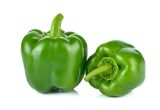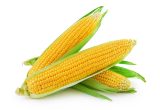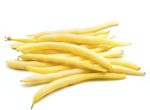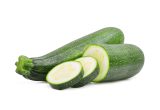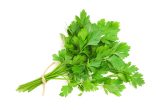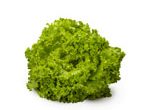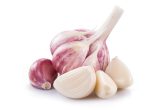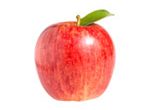Melon

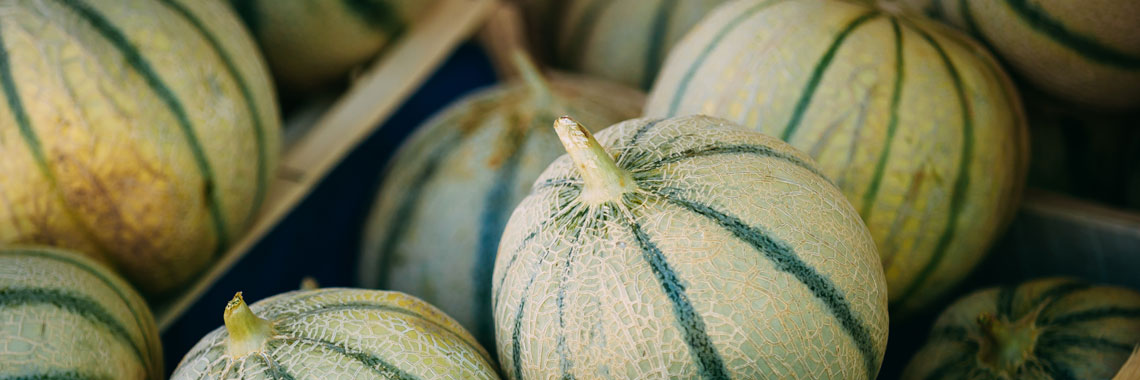
Description
- Melon (Cucumis melo L.) belongs to the Cucurbitaceae family.
- It is widely grown in the Mediterranean region (Silveira, 2013) and in warm regions more generally (Paris, 2012).
- The three main cultivars of the melon most in demand are Reticulatus (reticulated rind), Cantaloupe or Charentais (smooth or warty rind) and Casabas (smooth or wrinkled rind) (Paris, 2012)
PHYSICAL AND ORGANOLEPTIC CHARACTERISTICS
- The melon has a variable appearance according to its cultivar. The Agretis melon variety, commonly known as wild melon, has a thin mesocarp and tiny seeds (Kapoor, 2020).
- Its diameter varies from 4 to 200 cm and its weight from 50 g to 15 kg. It can be round, oval, pear-shaped or spindle-shaped. Its rind is sinuous, with or without stripes, of green, yellow, white, orange, red or grey colour. Its pulp can be orange, green, cream or white (Nuñez-Palenius, 2008; Paris, 2012).
- Carotenoids and chlorophyll are recognised as the major pigments in melon rind (Tadmor, 2010).
- A study identified more than fifty volatile compounds and fifty semi-volatile compounds, including fifteen active odorant compounds, mostly esters (Lignou, 2013).
- The Reticulatus and Cantaloupe cultivars are the most fragrant and aromatic, while the Casabas cultivar is known to be odourless, but very sweet (Paris, 2012).
- The flesh of the fruit, regardless of cultivar, is bland when the fruit is not yet ripe and becomes sweeter as it ripens (Paris, 2012). Sucrose is the main sugar that accumulates during ripening (Argyris, 2017).
- The sensory attributes characteristic of melon are its firmness, crunchiness and juiciness. Melon quality and overall consumer preference are mainly defined by texture and sweetness (Farcuh, 2010; Argyris, 2017).
COMPOSITION CHARACTERISTICS (excluding macronutrients, vitamins and minerals)
- Cucumis melo var. tibish is reportedly rich in antioxidants, and in particular in vitamins (C and E) and in flavonoids (Koubala, 2016).
- In vitro studies have shown that a moderate dose of cucurbitacins extracted from Cucumis melo L., and in particular cucurbitacin B, reduces systolic blood pressure (Yuhan, 2019)
- Agretis wild melons also have stomach, digestive, febrifuge, vermifuge, antioxidant, analgesic and anti-inflammatory properties (Kapoor, 2020).
RAW
The following values are approximate and depend on variety, season, ripeness, cultivation conditions, etc. The Charentais melon provides on average 62.70 calories (kcal) per 100 g, i.e. 265 kJ. A melon weighs about 1 kg.
COMPOSITION TABLES
For each nutrient, the tables provide information on the content and the minimum and maximum values as well as the percentage of the Dietary Reference Values (DRVs) for 100 g net of Charentais melon (except the table of polyphenols which concerns Cantaloupe melon).
MACRONUTRIENTS
| Constituent (g) | Average content |
Min-Max per 100g |
DRV% |
|---|---|---|---|
| Water | 84,20 | NC - 94,90 | - |
| Fibers | 1,30 | 0,60 - 1,60 | - |
| Carbohydrates | 14,80 | 7,30 - NC | 5,69 |
| Sugars | 10,60 | 5 - NC | 11,78 |
| Lipids | < 0,50 | 0,08 - NC | - |
| Saturated fat | < 0,01 | NC - 0,051 | - |
| Protein | 1,13 | 0,10 - 1,25 | 2,26 |
| Constituent (g) | Amount | Min-Max | DRV% |
|---|---|---|---|
| Water | Ciqual 2020 | - | - |
| Fibers | Ciqual 2020 (valeur issue des analyses Ciqual-Aprifel 2017) | - | - |
| Carbohydrates | Ciqual 2020 | - | Règlement (UE) N°1169/2011 du parlement Européen et du conseil du 25 octobre 2011 |
| Sugars | Ciqual 2020 (valeur issue des analyses Ciqual-Aprifel 2017) | - | Règlement (UE) N°1169/2011 du parlement Européen et du conseil du 25 octobre 2011 |
| Lipids | Ciqual 2020 (valeur issue des analyses Ciqual-Aprifel 2017) | - | Règlement (UE) N°1169/2011 du parlement Européen et du conseil du 25 octobre 2011 |
| Saturated fat | Ciqual 2020 (valeur issue des analyses Ciqual-Aprifel 2017) | - | Règlement (UE) N°1169/2011 du parlement Européen et du conseil du 25 octobre 2011 |
| Protein | Ciqual 2020 (valeur issue des analyses Ciqual-Aprifel 2017) | - | Règlement (UE) N°1169/2011 du parlement Européen et du conseil du 25 octobre 2011 |
Zoom on carbohydrates
- Melon contains a quantity of carbohydrates (14.80 g per 100 g) that is greater than the average amount found in fresh fruit: about 11.31 g per 100 g.
- They are mainly sugars, in the form of sucrose (6.56 g per 100 g), fructose (2.49 g per 100 g) and glucose (1.49 g per 100 g), and polyols in the form of mannitol (4 g per 100 g).
- The carbohydrate content of melon is strongly dependent on its ripeness (Dai, 2011).
Zoom on fibres
- Melon contains 1.30 g of fibre per 100 g, which is lower than the average content in fresh fruit (2.77 g per 100 g).
Zoom on proteins
- The protein content of melon (1.13 g per 100 g) is higher than the average amount found in fresh fruit: 0.93 g per 100 g.
Zoom on lipids
- Melon is fat-free* as it contains less than 0.5 g per 100 g.
* Regulation (EC) No 1924/2006 of the European Parliament and of the Council of 20 December 2006 on nutrition and health claims made on foods.
MINERALS AND TRACE ELEMENTS
| Constituent | Average content |
Min-Max per 100g |
DRV% |
|---|---|---|---|
| Calcium (mg) | 11 | 3,62 - 32 | 1,38 |
| Chloride (mg) | 25,80 | - | 3,23 |
| Copper (mg) | 0,06 | 0 - 0,20 | 6 |
| Iron (mg) | 0,21 | 0,07 - 0,64 | 1,50 |
| Iodine (µg) | < 20 | 0 - NC | - |
| Magnesium (mg) | 16 | 7 - 21,40 | 4,27 |
| Manganese (mg) | 0,04 | 0 - 0,066 | 2 |
| Phosphorus (mg) | 17 | 8 - 78,60 | 2,43 |
| Potassium (mg) | 380 | 112 - 420 | 19 |
| Selenium (µg) | < 20 | 0 - NC | - |
| Sodium (mg) | 24 | 5 - 44 | - |
| Zinc (mg) | 0,18 | 0,07 - 0,37 | 1,80 |
| Constituent | Amount | Min-Max | DRV% |
|---|---|---|---|
| Calcium (mg) | Ciqual 2020 (valeur issue des analyses Ciqual-Aprifel 2017) | - | Règlement (UE) N°1169/2011 du parlement Européen et du conseil du 25 octobre 2011 |
| Chloride (mg) | Ciqual 2020 (valeur issue des analyses Ciqual-Aprifel 2017) | - | Règlement (UE) N°1169/2011 du parlement Européen et du conseil du 25 octobre 2011 |
| Copper (mg) | Ciqual 2020 (valeur issue des analyses Ciqual-Aprifel 2017) | - | Règlement (UE) N°1169/2011 du parlement Européen et du conseil du 25 octobre 2011 |
| Iron (mg) | Ciqual 2020 (valeur issue des analyses Ciqual-Aprifel 2017) | - | Règlement (UE) N°1169/2011 du parlement Européen et du conseil du 25 octobre 2011 |
| Iodine (µg) | Ciqual 2020 (valeur issue des analyses Ciqual-Aprifel 2017) | - | Règlement (UE) N°1169/2011 du parlement Européen et du conseil du 25 octobre 2011 |
| Magnesium (mg) | Ciqual 2020 (valeur issue des analyses Ciqual-Aprifel 2017) | - | Règlement (UE) N°1169/2011 du parlement Européen et du conseil du 25 octobre 2011 |
| Manganese (mg) | Ciqual 2020 (valeur issue des analyses Ciqual-Aprifel 2017) | - | Règlement (UE) N°1169/2011 du parlement Européen et du conseil du 25 octobre 2011 |
| Phosphorus (mg) | Ciqual 2020 (valeur issue des analyses Ciqual-Aprifel 2017) | - | Règlement (UE) N°1169/2011 du parlement Européen et du conseil du 25 octobre 2011 |
| Potassium (mg) | Ciqual 2020 (valeur issue des analyses Ciqual-Aprifel 2017) | - | Règlement (UE) N°1169/2011 du parlement Européen et du conseil du 25 octobre 2011 |
| Selenium (µg) | Ciqual 2020 (valeur issue des analyses Ciqual-Aprifel 2017) | - | Règlement (UE) N°1169/2011 du parlement Européen et du conseil du 25 octobre 2011 |
| Sodium (mg) | Ciqual 2020 (valeur issue des analyses Ciqual-Aprifel 2017) | - | - |
| Zinc (mg) | Ciqual 2020 (valeur issue des analyses Ciqual-Aprifel 2017) | - | Règlement (UE) N°1169/2011 du parlement Européen et du conseil du 25 octobre 2011 |
Zoom on minerals and trace elements
- Melon is a source of potassium, as it provides the equivalent of 19% of DRVs, i.e. 380 mg per 100 g.
The other minerals and trace elements are present in quantities representing less than 7% of DRVs.
VITAMINS
| Constituent | Average content |
Min-Max per 100g |
DRV% |
|---|---|---|---|
| Provitamin A Beta-carotene (µg) | 2 500 | 1380 - 4710 | - |
| Vitamin A equivalent (µg) | 416,67 | 230 - 785 | 52,08 |
| Vitamin B1 (mg) | < 0,015 | NC - 0,08 | - |
| Vitamin B2 (mg) | < 0,01 | NC - 0,033 | - |
| Vitamin B3 (mg) | 0,60 | 0,49 - 0,89 | 3,75 |
| Vitamin B5 (mg) | 0,15 | 0,042 - 0,25 | 2,50 |
| Vitamin B6 (mg) | 0,055 | 0,028 - 0,12 | 3,93 |
| Vitamin B9 (µg) | 58,90 | 7 - NC | 29,45 |
| Vitamin C (mg) | 8,14 | NC - 40,70 | 10,18 |
| Vitamin E (mg) | < 0,08 | 0,02 - 0,11 | - |
| Vitamin K1 (µg) | < 0,80 | NC - 4 | - |
| Constituent | Amount | Min-Max | DRV% |
|---|---|---|---|
| Provitamin A Beta-carotene (µg) | Ciqual 2020 (valeur issue des analyses Ciqual-Aprifel 2017) | - | - |
| Vitamin A equivalent (µg) | Calcul à partir de la valeur Provitamine A Béta-carotène* | - | Règlement (UE) N°1169/2011 du parlement Européen, et du conseil du 25 octobre 2011 |
| Vitamin B1 (mg) | Ciqual 2020 (valeur issue des analyses Ciqual-Aprifel 2017) | - | Règlement (UE) N°1169/2011 du parlement Européen et du conseil du 25 octobre 2011 |
| Vitamin B2 (mg) | Ciqual 2020 (valeur issue des analyses Ciqual-Aprifel 2017) | - | Règlement (UE) N°1169/2011 du parlement Européen et du conseil du 25 octobre 2011 |
| Vitamin B3 (mg) | Ciqual 2020 (valeur issue des analyses Ciqual-Aprifel 2017) | - | Règlement (UE) N°1169/2011 du parlement Européen et du conseil du 25 octobre 2011 |
| Vitamin B5 (mg) | Ciqual 2020 (valeur issue des analyses Ciqual-Aprifel 2017) | - | Règlement (UE) N°1169/2011 du parlement Européen et du conseil du 25 octobre 2011 |
| Vitamin B6 (mg) | Ciqual 2020 (valeur issue des analyses Ciqual-Aprifel 2017) | - | Règlement (UE) N°1169/2011 du parlement Européen et du conseil du 25 octobre 2011 |
| Vitamin B9 (µg) | Ciqual 2020 (valeur issue des analyses Ciqual-Aprifel 2017) | - | Règlement (UE) N°1169/2011 du parlement Européen et du conseil du 25 octobre 2011 |
| Vitamin C (mg) | Ciqual 2020 (valeur issue des analyses Ciqual-Aprifel 2017) | - | Règlement (UE) N°1169/2011 du parlement Européen et du conseil du 25 octobre 2011 |
| Vitamin E (mg) | Ciqual 2020 | - | Règlement (UE) N°1169/2011 du parlement Européen et du conseil du 25 octobre 2011 |
| Vitamin K1 (µg) | Ciqual 2020 (valeur issue des analyses Ciqual-Aprifel 2017) | - | Règlement (UE) N°1169/2011 du parlement Européen et du conseil du 25 octobre 2011 |
Zoom on vitamins
- Melon is high in vitamin A, carotenoid family, as it provides the equivalent of 52.08% of DRVs, i.e. 416.67 µg per 100 g.
- Melon is also a source of vitamin B9, as it provides the equivalent of 29.45% of DRVs, i.e. 58.90 µg per 100 g.
- It also contains a significant amount of vitamin C, as it represents 10.18% of DRVs, i.e. 8.14 mg per 100 g.
- The other vitamins are present in quantities representing less than 4% of DRVs.
* Calculation made: Beta-Carotene / 6 + retinol
POLYPHENOLS
| Constituent (mg) | Average content |
Min-Max per 100mg |
|---|---|---|
| Total polyphenols | 109,59 | 8,70 - 124 |
| Constituent (mg) | Amount | Min-Max |
|---|---|---|
| Total polyphenols | Phenol explorer, version 3.6- Méthode utilisée : Folin Assay | - |
Zoom on polyphenols
- Polyphenols are substances with an antioxidant effect.
- Melon has a significant content of total polyphenols, according to Folin Assay analysis.
Nutrition and health claims
According to the definitions of nutrition claims as set out in Regulation (EC) No 1924/2006 on nutrition and health claims, and in view of the composition of melon, the following claims may be used:
NUTRITION CLAIMS OF MELON
- High in vitamin A (100 g of melon provide the equivalent of more than 30% of DRVs)
- Source of vitamin B9 (100 g of melon provide the equivalent of more than 15% of DRVs)
- Source of potassium (100 g of melon provide the equivalent of more than 15% of DRVs)
- Fat-free (100 g of melon contain less than 0.5 g of fat)
HEALTH CLAIMS (for a consumption of 100 g of melon)
Vitamin A
- Vitamin A has a role in the process of cell specialisation.
- Vitamin A contributes to:
- maintenance of normal skin,
- maintenance of normal mucous membranes,
- maintenance of normal vision,
- normal iron metabolism,
- normal function of the immune system.
Folates or vitamin B9
- Folates contribute to:
- maternal tissue growth during pregnancy,
- normal amino acid synthesis,
- normal blood formation,
- normal homocysteine metabolism,
- normal psychological function,
- normal function of the immune system,
- reduction of tiredness and fatigue.
- Folates have a role in the process of cell division.
Potassium
- Potassium contributes to:
- normal functioning of the nervous system,
- normal muscle function,
- maintenance of normal blood pressure.
References
- Agence nationale de sécurité sanitaire de l’alimentation, de l’environnement et du travail. Table de composition nutritionnelle des aliments Ciqual 2020. Consultée le 11/08/2020 depuis le site internet Ciqual https://ciqual.anses.fr/
- Argyris JM, Díaz A, Ruggieri V, Fernández M, Jahrmann T, Gibon Y, Picó B, Martín-Hernández AM, Monforte AJ and Garcia-Mas J. QTL Analyses in Multiple Populations Employed for the Fine Mapping and Identification of Candidate Genes at a Locus Affecting Sugar Accumulation in Melon (Cucumis melo L.). Front. Plant Sci. 2017;8:1679.
- Dai N, Cohen S, Portnoy V, Tzuri G, Harel-Beja R, Pompan-Lotan M, Carmi N, Zhang G, Diber A, Pollock S, Karchi H, Yeselson Y, Petreikov M, Shen S, Sahar U, Hovav R, Lewinsohn E, Tadmor Y, Granot D, Ophir R, Sherman A, Fei Z, Giovannoni J, Burger Y, Katzir N, Schaffer AA. Metabolism of soluble sugars in developing melon fruit: a global transcriptional view of the metabolic transition to sucrose accumulation. Plant Mol Biol. 2011;76(1-2):1-18.
- Farcuh M, Copes B, Le-Navenec G, Marroquin J, jaunet T, Chi-Ham C, Cantu D, Bradford KJ, Van Deyne A. Texture diversity in melon (Cucumis melo L.): Sensory and physical assessments. Postharvest Biology and Technology. 2020;150:111024.
- Kapoor M, Sharma C, Kaur N, Kaur G, Kaur R, Batra K, Rani J. Phyto-Pharmacological Aspects of Cucumis melo var. agrestis: A Systematic Review. Pharmacognosy Reviews. 2020;14(27).
- Koubala BB, Bassang’na G, Yapo BM, Raihanatou R. Morphological and Biochemical Changes During Muskmelon (Cucumis melo var. Tibish) Fruit Maturation. Journal of Food and Nutrition Sciences. 2016;4(1):18-28.
- Lignou S, Parker JK, Oruna-Concha MJ, Mottram DS. Flavour profiles of three novel acidic varieties of muskmelon (Cucumis melo L.). Food Chem. 2013;139(1-4):1152-60.
- Nuñez-Palenius HG, Gomez-Lim M, Ochoa-Alejo N, Grumet R, Lester G, Cantliffe DJ. Melon fruits: genetic diversity, physiology, and biotechnology features. Crit Rev Biotechnol. 2008;28(1):13-55.
- Paris HS, Amar Z, Lev E. Medieval emergence of sweet melons, Cucumis melo (Cucurbitaceae). Ann Bot. 2012;110(1):23-33.
- Règlement (CE) N° 1924/2006 du Parlement européen et du Conseil du 20 décembre 2006 concernant les allégations nutritionnelles et de santé portant sur les denrées alimentaires.
- Règlement (UE) N°432/2012 de la Commission du 16 mai 2012 établissant une liste des allégations de santé autorisées portant sur les denrées alimentaires, autres que celles faisant référence à la réduction du risque de maladie ainsi qu’au développement et à la santé infantiles.
- Règlement (UE) n°1169/2011 du Parlement européen et du Conseil du 25 octobre 2011 concernant l’information des consommateurs sur les denrées alimentaires, modifiant les règlements (CE) n°1924/2006 et (CE) n°1925/2006 du Parlement européen et de Conseil et abrogeant la directive 87/250/CEE de la Commission, la directive 90/496/CEE du Conseil, la directive 1999/10/CE de la Commission, la directive 200/13/CE du Parlement européen et du Conseil, les directives 2002/67/CE et 2008/5/CE de la Commission et le règlement (CE) n°608/2004 de la Commission.
- Silveira AC, Aguayo E, Artés F. The suitability of three Galia melon cultivars and different types of cuts for the fresh-cut industry. J Sci Food Agric. 2013;93(15):3826-31.
- Tadmor Y, Burger J, Yaakov I, Feder A, Libhaber SE, Portnoy V, Meir A, Tzuri G, Sa’ar U, Rogachev I, Aharoni A, Abeliovich H, Schaffer AA, Lewinsohn E, Katzir N. Genetics of flavonoid, carotenoid, and chlorophyll pigments in melon fruit rinds. J Agric Food Chem. 2010;58(19):10722-8.
- Yuhan R, Qian L, Yun W. Cucurbitacins extracted from Cucumis melo L. (CuEC) exert a hypotensive effect via regulating vascular tone. Hypertens Res. 2019;42:1152-61.





